by Mike Gulett –
If you are reading this it is assumed you are a car lover, and probably, a collector. We car lovers and collectors also love collecting other things, right? For me I also love wrist watches and have been collecting them for many years. I like the looks of a beautiful watch and the mechanical functions – not unlike how I think about a car.
I recently bought a new dive watch, even though I do not dive just like I do not race cars. But I still admire race cars like a Bizzarrini GT 5300 and I admire dive watches too. My new watch is a beauty and is available at a very reasonable price – more on this new watch later on, below.
In the world of mechanical watches most top quality movements are made in Switzerland, Germany or Japan. There are a number of new watch makers known as microbrands, or independent brands, that make and sell beautiful watches usually at a fraction of the price of a major brand.
These small watch companies usually do not make their own movements because of the complexity and expertise required. Fortunately they are able to buy movements from established manufacturers. This is not unlike a European car company using an American engine in their cars (like Bizzarrini, Iso, Jensen, DeTomaso, AC Shelby Cobra and others).
This is another direct connection between classic cars and watches.
A Brief History of Dive Watches
The dive watch, an important style of wrist watch, was born from the desire to provide reliable, underwater-capable timekeeping for military, scientific, and recreational divers. Its history spans nearly a century, closely tied to advancements in both horology and underwater exploration.
The roots of the dive watch go back to the early 20th century, but the first true water-resistant wristwatches emerged in the 1920s and 1930s. Rolex introduced a key innovation in 1926 with the “Oyster” case, a hermetically sealed watch case that kept water and dust out.
However, it was not until the 1950s that the modern dive watch as we know it truly took shape. This period coincided with a boom in recreational diving, spurred by Jacques Cousteau’s underwater documentaries and the release of the Aqua-Lung, which made scuba diving accessible to regular people.
In 1953, two watches changed the game: the Rolex Submariner and the Blancpain Fifty Fathoms. Both were designed specifically for divers and featured rotating bezels to track elapsed time underwater, highly legible dials, and robust water resistance. The Submariner, with its now-legendary design and links to James Bond films, became a cultural and horological icon. The Fifty Fathoms, developed with input from French Navy combat swimmers, is often considered the first modern dive watch, particularly due to its use of a unidirectional bezel—a safety feature that only allows divers to shorten their dive time if the bezel is accidentally turned.
Throughout the 1960s and 1970s, many brands entered the dive watch arena, each bringing unique technical improvements. Omega introduced the Seamaster 300, and later the radical Ploprof (Plongeur Professionnel), developed in collaboration with COMEX for deep-sea diving. Doxa released its Sub 300T, notable for its bright orange dial and no-decompression bezel, appealing to professional and sport divers alike.
Today, the dive watch enjoys a dual role: as a tool for professional and recreational divers, and as a fashionable, everyday watch. Most owners never dive with them (like me), but the rugged functionality and design heritage make them enduring favorites. Brands like Rolex, Omega, Seiko, and Tudor continue to innovate in dive watch design, offering modern dive watches that honor the past while embracing modern technology.
Dive watches are also collectable, both old ones and new ones as well.
My New Watch – The Baltic Aquascaphe
Baltic Watches is a French microbrand that has garnered attention in the watchmaking community for its vintage-inspired designs, quality craftsmanship, and low pricing. Founded in 2017 by Etienne Malec. Baltic watches are designed and assembled in France and the Aquascaphe uses the Japanese Automatic Miyota 9039 movement.
I paid $850 USD for the watch, a metal bracelet, a rubber strap, taxes and shipping from France to California, which is much less than a Rolex Submariner or a Blancpain Fifty Fathoms.
After a few days of ownership I am very happy with this new acquisition.
The Baltic Aquascaphe looks similar to the Rolex Submariner and the Blancpain Fifty Fathoms but is not a copy of either.
This reminds me of the way that a Ferrari 360 is similar in style to the Dino 246 GT but not a copy.
Cars and watches – I love them both.
Let us know what you think in the Comments.
Photos compliments of Rolex, Blancpain and Baltic. Research and some text by ChatGPT 40.
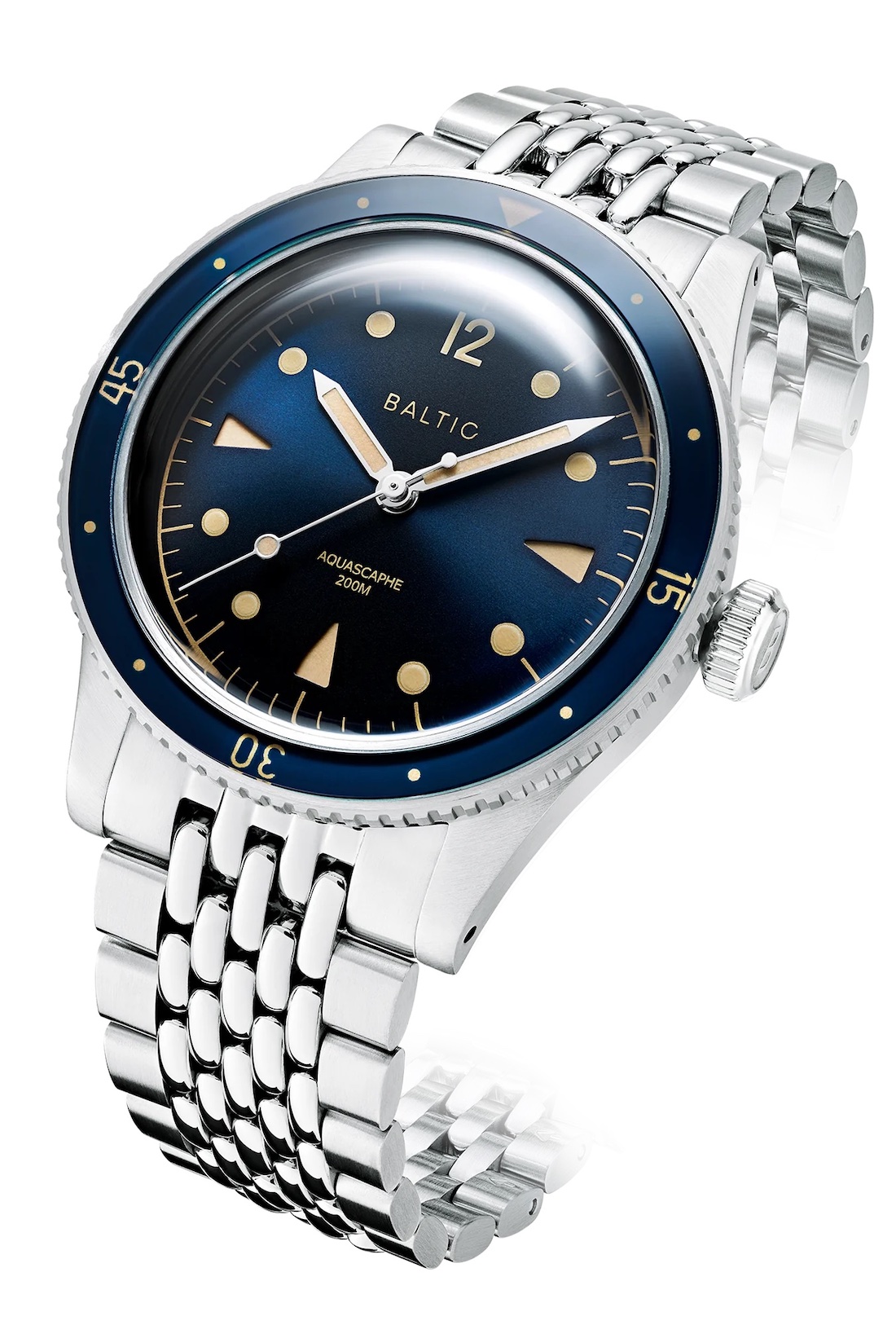
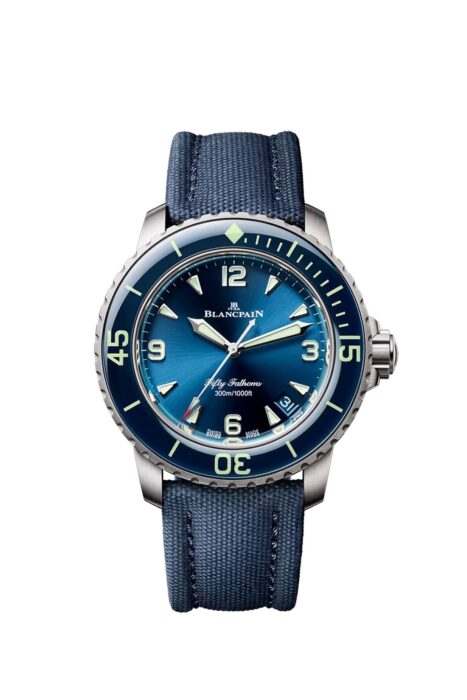
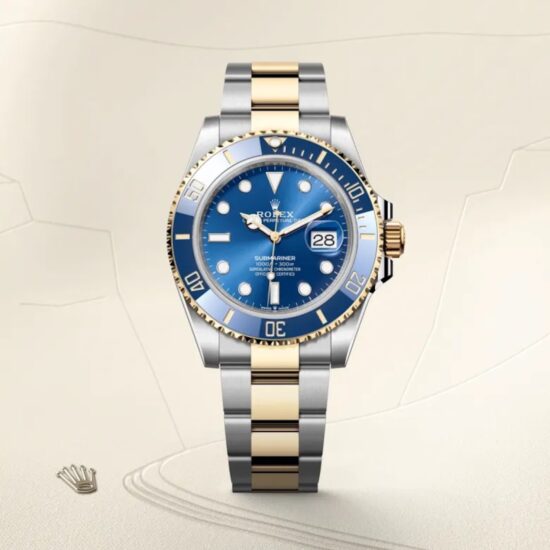
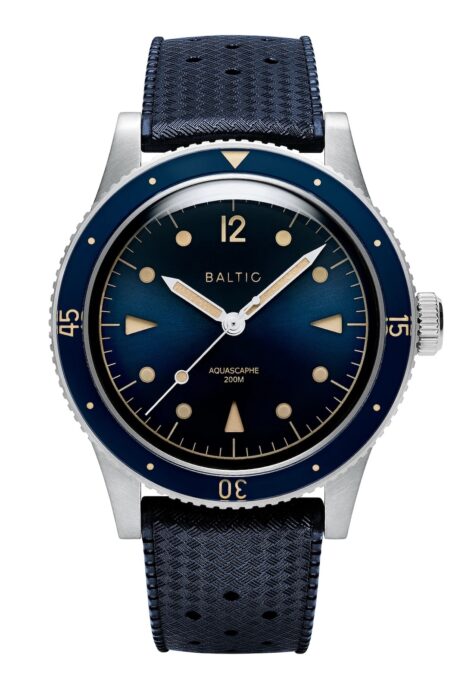
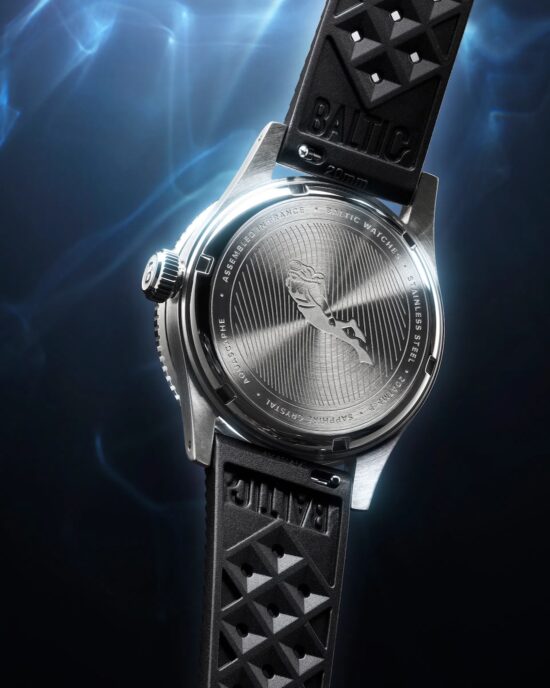


Hi Mike,
I have never seen the Baltic Aquascaphe but I agree with you, It is a beautiful addition to a collection at a very reasonable price.
My complaint with today’s watches is the huge face on some of them. Many look like you’re wearing a bathroom scale, to paraphrase Jay Leno.
I have small wrists and if it’s the last thing I want is to have a watch wearing me.
I have a Seiko Chronograph Sport 150 in stainless steal that I have owned since 1994 and while I don’t scuba, I do love to snorkle and this watch has been down 25 feet off of Maui and 15 feet of of Bermuda and never got water compromised.
By the way, the cost back in 1994 was about $400.
Great piece Mike – this could have been an even longer piece on chronographs and motor racing heritage from the high end in Rolex Daytona plus the exquisite Chopard Mille Miglia
Not to mention the Tag Heuer , Hublot and Richard Mille direct connection to Formula 1 sponsorships and timing.
You could spend a million dollars embellishing your wrist !
There are many competent affordable options such as “Autodromo”
We haven’t even touched upon aviation which is of course arguably where wrist watches started since the early pilots didn’t want to be fiddling with their fob watch as they flew!
My current favourites are Rolex Daytona, Hublot any of the 48 mm and Scalfaro “precious metal”: they melt down a small piece of 250 GTO or lightweight E -type (discarded spare part) and put it in your watch.
Thanks Mike I loved your piece.
Let’s hear some more from the enthusiasts !
I was contacted by the young men who own Scalfaro watches.they contacted me to do a watch like the GTO watch
Of my 901 Prototype, I sent them some metal from the 901 from parts from the restoration, actually met them for dinner in Germany! Nice guys,they never did squat! So much for scalfaro!
This article just reminded me of a Rolex Daytona that I have had since 1982, given to me by one of my tenants at my then Florida efficiency motel. He was enrolled at a flight school and was low on funds and so he traded me his Rolex for his rent, that watch was gifted to him by his mother when he graduated from high school. I only wore it a few times back then as it seemed “too fancy” for me.
I have not looked at it for many years so i just went through some storage items and found it, and in the Rolex box is a receipt from Rolex Watch U.S.A. Fifth Ave. NY,NY for Overhaul $125.28, dated 02/01/79. It even has a Rolex one year factory service guarantee card dated the same day as the receipt.
I think it needs another overhaul. I wonder what this watch is worth?
Philip,
That sounds like a story from Antiques Roadshow. Keep all the paperwork and boxes. If you have it serviced do not let them change the dial. That watch is worth a lot of money.
Philip,
Depending on the specific Rolex Daytona model, it can actually be worth up to $25,000 on the secondary market!!!! So, be careful with it!!!!!!!!!!!!!!!!!!!!!!!!!!!!!!!!!
Mike, that is a gorgeous diving watch at a very nice, and it has a reasonable price point. Wear it and enjoy it in good health!!!
As far as collector cars and collector watches, I followed this auction very closely a few years back:
“Paul Newman’s ‘Paul Newman’ Rolex Daytona Sells For $17.8 Million, A Record For A Wristwatch At Auction
By Hyla Ames Bauer, Former Contributor.
Oct 26, 2017, 06:39pm EDT
Paul Newman was once the most bankable movie star in the world and tonight at Phillips auction house in New York, he became the undisputed king of the watch world when his 1968 Rolex Daytona sold for $15.5 million. (Including the buyer’s premium of 12.5%, the final price comes to $17,752,500.) After 12 minutes of bidding, the watch was sold to a bidder on the telephone, setting a new record for the highest price ever achieved for a wristwatch at auction. More than 400 people from all over the world gathered at Phillips’ New York headquarters at 57th and Park Avenue for the Winning Icons auction. The previous record for a Rolex at auction was set in May when the Bao Dai Rolex sold for more than $5 million, also by Phillips, and the previous record for a wristwatch at auction was $11 million for a Patek Philippe ref. 1518 timepiece, also by Phillips.
Newman’s own ‘Paul Newman’ Daytona—a gift from his wife, actress Joanne Woodward—has long been considered the Holy Grail among watch collectors. “Many people are saying this is the greatest watch on the planet,” said Geoff Hess, a vintage Rolex collector and CEO of Analog Shift. “This watch transcends watch collecting, it transcends the watch community,” he continued.
“This watch appeals to people way beyond the watch world. I don’t recall a watch that has roots and ties in so many [collecting] communities, and it’s an incredibly potent mix,” said Hess. ‘It of course attracts those who love and admire motor sports and cars, it also appeals to people who love Hollywood memorabilia. It’s also a piece of Americana, so it appeals to the American history community.”
The Rolex Daytona has an unusual “exotic” dial design, and was dubbed the ‘Paul Newman’ in the 1980s because he was always seen wearing it, according to Paul Boutros, Phillips Senior Vice President and Head of Watches for the Americas. “It’s a whimsical, art deco style dial,” he said, “there are about 2,000 to 3,000 of this type of dial in the world.” Since the 1980s “everyone has been searching for Paul Newman’s Paul Newman,” Boutros noted. And it found its way to Phillips through another collector. “In this case, the watch found us. The current owner, James Cox [a former boyfriend of Newman’s daughter Nell, below], has owned the watch since 1984 when Paul Newman gave it to him,” Boutros explained. Cox sought the advice of his lawyer when looking to sell the watch, Boutros said, and the attorney put him in touch with a watch collector, who in turn recommended Phillips. (Cox will donate a significant portion of the sale price to the Nell Newman Foundation. She is continuing her father’s legacy of philanthropy with her eponymous foundation, which supports organizations in the areas of education, animal welfare and human services among others.
At the time that Newman gave the watch to James Cox (Nell’s college boyfriend at the time), the watch was selling for about $200,” Boutros noted. At today’s selling price of $17.8 million, that’s quite a return on investment.” (Newman and Cox happened to be chopping some wood at Newman’s house in Westport, Connecticut, and he asked Cox the time, but he didn’t have a watch. When they got back to the house, he gave the watch to Cox and told him “that it keeps pretty good time.”
When Philips announced the auction for this iconic watch, it was expected to fetch between $1 million and $3 million, and exceeded the high estimate by 5 times because of its provenance as being Mr. Newman’s. Mr. Cox had actually had stopped wearing it many years ago, because everybody recognized it. He still sits on the board of Nell’s foundation, and approached her about finally selling it, keeping a small amount of the money, but donating the majority of whatever it would get for the foundation to continue its great work.
I am sure that Mr. Newman, a true humanitarian, was looking down from Heaven, and was happy with the final result.
I love the story with that Newman Rolex Daytona watch, and have told it to a million people!!!
Glenn in Brooklyn, NY
Glenn,
I wrote about the Paul Newman Rolex Daytona here:
https://mycarquest.com/2017/10/paul-newmans-daytona-rolex-watch-sets-record.html
Yes, I thought you did!!! But, I love your article and everything about Mr. Newman’s Rolex Daytona Watch!!! To me, that story never, ever gets tired, nor will it EVER!!!
Glenn in Brooklyn, NY.
Hey Mike,
I’ve always assumed that it was just a “low end” Rolex model, not one of the more expensive models. I still don’t know but it’s becoming more interesting by the hour.
I went online and looked up Rolex and found some info. I just removed the watch band and see that it’s a model 6239 which apparently is the first series, same as Paul Newman’s, but w/o the special color face.
Also, I just googled that tenant who has his name on the Rolex receipt and Guarantee card, a rather unusual last name, and only 2 males listed with a first initial of “J”, and one is a flight instructor for 35 years! I emailed him.
Phillip your story reminds me of my “to big to wear Rolex”, I received a gold Rolex from General Motors back in 1985 . When it arrived by currier I was taken aback by how big and heavy it was. I immediately made arrangements to swap it for a ladies version. My wife has proudly worn it ever since.
Good story, John. I think in 1982 I was wearing a Casio digital watch and the Rolex was so over the top it conflicted with my hippy attitudes. I still don’t wear a fancy Rolex watch but I do drive a 1971 Aston Martin, and somehow that doesn’t seem so conspicuous…it seems about perfect. Go figure.
Philip,
Please post a photo of your Rolex and Aston Martin.
Phillip sent in this photo of his Rolex Daytona.
And Phillip sent in this photo of his 1971 Aston Martin.